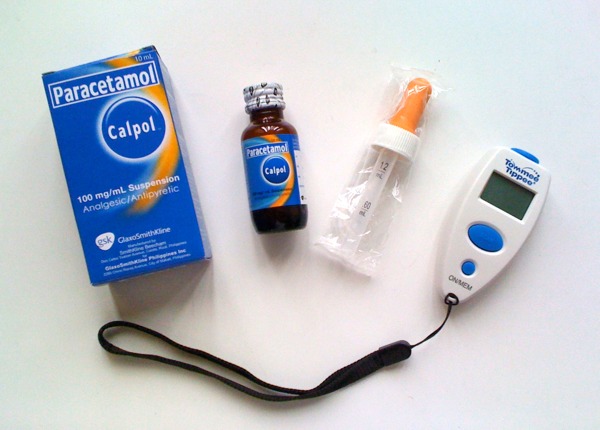Earlier this week, my infant daughter got sick and by the middle of the night had a worryingly high fever. Fortunately we'd stocked up on Calpol (paracetamol) so were quickly able to bring her temperature down to acceptable levels.
Two things were indispensable over the following days:
-
Calpol: this is a brand name for children's paracetamol. There are others available on the market but I stocked up on this one since it's a name I recognize and used as a child.
-
Digital (scan type) thermometer: regular bulb thermometers that need to be inserted into the mouth, armpit or backside are a nightmare with young children; little kids just struggle and won't sit still for long enough! With this thermometer you just hover the device over the child's forehead to take a reading.

Calpol (Paracetamol) and digital thermometer
I'd gone to the range with friends a few days prior so the incident reminded me of a comment made by one of our
Facebook group members a little while ago:
"I pity the guy who spends all his money on guns and ammo, but doesn't buy food and medical preps for his family."
The range trip cost approx. P1,500 for ammo but a bottle of Calpol was only P49. None of my guns or ammunition were any help that night but I'm pretty sure the Calpol saved us a trip to the ER.
This is just a quick reminder to us all that while we're preparing for the big things, let's not forget the little emergencies. To paraphrase something told to me by
Pinoy Prepper:
"The best way to avoid disasters is to prepare for emergencies."
So, for those of us with young children, why not take a quick look now in your medical supplies to check that you have the basics covered? This goes for new parents especially who may not yet have updated the stock to cover new family members.
Continue Reading


 Article by Pinoy Prepper,
Article by Pinoy Prepper,